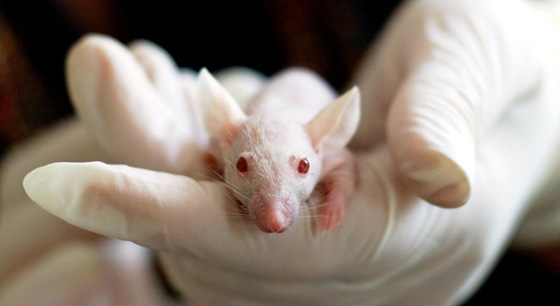Home / Research / Core Facilities /
 The overall objective of the Animal Behavior Core (ABC) is to provide Research Affiliates with the infrastructure needed to perform the most advanced and innovative functional outcome measures when assessing the effectiveness of intrinsic (gene-based) and/or extrinsic (surgical, drug-based) interventions in animal models of neurodevelopmental disorders.
The overall objective of the Animal Behavior Core (ABC) is to provide Research Affiliates with the infrastructure needed to perform the most advanced and innovative functional outcome measures when assessing the effectiveness of intrinsic (gene-based) and/or extrinsic (surgical, drug-based) interventions in animal models of neurodevelopmental disorders.
ABC services assist investigators in understanding the relationships between specific genetic conditions, environmental, chemical, or pharmacologic exposures or anatomical lesions and their behavioral sequelae and provide critical data for preclinical intervention trials to assess novel therapeutic targets. The core includes specialized equipment and protocols for evaluating the behavior of both mice and rats. In collaboration with the Center for Integrative Brain Research (CIBR) at Seattle Children’s Research Institute, additional rodent behavior equipment and protocols for Research Affiliates are available.
Additional expertise and equipment are available for behavioral phenotyping in gyrified animal models of IDD, such as the ferret.
Animal Behavior Core
Core Services
Specific services are as follows:
- To provide scientific, management, and budgeting services to Research Affiliates using animal models for studies of IDD.
- To provide behavioral testing equipment, research space, and novel testing protocols for investigators that enable state-of-the-art assessment of behavior in rodent and gyrified models of IDD.
- To train Research Affiliates and their staff in appropriate testing protocols.
- To coordinate services across other IDDRC Cores and support development of clinical applications; and
- To promote the development of additional innovative techniques that can be utilized in conjunction with assessments of behavioral functions in rodent models of IDD.
Animal Behavior Core – Rodent Behavior Laboratory (RBL)
Our rodent behavior laboratory includes a dedicated housing room (263 sq ft) for over 160 cages of mice and rats in the T-wing of the Health Sciences Building, and three large procedure rooms (762 sq ft) subdivided into seven separate testing areas. The facility is located within a centralized, specific pathogen free Vivarium (approx. 10,000 sq ft) in the T-wing of the Health Sciences Center, which provides husbandry and veterinary support, caging, supplies, and cage-wash facilities.
Steps for Initiating a New Project
For projects in the proposal development phase, as well as for approved projects, the RBL works with affiliates to provide scientific, management, and budgetary information. Funded grants also are reviewed to ensure strict compliance with IACUC standards, careful observance of the NIH Guide to the Care and Use of Laboratory Animals, and compliance with accreditation standards set by AAALAC. For funded projects, access to Core services that are required for individual research projects is discussed with the investigators. Of note, all services described above are provided at no cost (e.g., training, consultation, coordination, testing equipment). Construction of highly specialized equipment, however, may require investigator support. The Department of Comparative Medicine does charge affiliates the decentralized per diem rate for housing rodents in our testing facility.
Use of facilities is scheduled on a daily basis through an online calendar. Laboratory schedules that list the day-to-day research activity in the labs are also posted in the testing rooms.
Contact Information
Please contact Toby B. Cole, Ph.D., iddrcabc@uw.edu, 206.543.9300.
Behavioral Testing Capabilities
Note – behavioral testing typically requires a minimum of 10 per experimental group. Testing is highly sensitive to environmental influences, so steps to minimize environmental differences are critical. Tests available in the RBL include a large variety of cognitive and neuromotor behavioral assessments. Neurobehavioral domains capable of being assessed include activity/exploration, motor function, learning and memory, anxiety, sensory functions, neurological reflexes, and social behavior.
- SR-Lab Startle Response System
- Rota-Rod (5-Station)
- Open Field
- Morris Water Maze
- 8-arm Radial Maze (water maze)
- Shuttle Box with Precision Shocker and Noise Generator
- HABITEST Modular Test Cage Systems
- Noldus Catwalk
- Activity Monitoring in Noldus PhenoTyper Cages
- Running Wheels
- Noldus Ultravox
- Mazes and Video Tracking Equipment
- EthoVision Multiple Body Point Module
- EthoVision Social Interaction Module
- Media Recorder
- Lickometers
- Social Interaction Arenas
- Grid test
- T-maze (non-elevated)
- T-maze (elevated)
- Radial Arm Maze
- Elevated-plus maze

